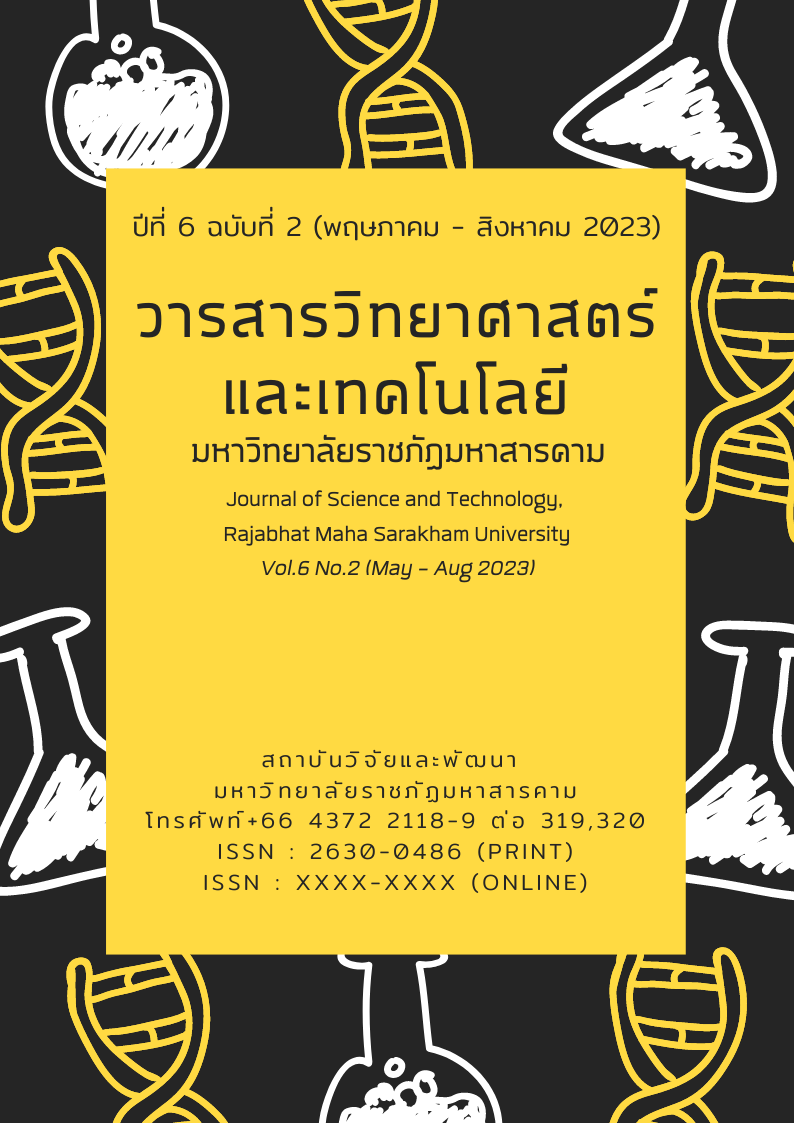Case Study : Situation of Antibiotic Residues in Fresh Chicken and Chicken products sold in Bangkok
Keywords:
Antibiotic residue, Fresh chicken, Chicken products, Hygiene chickenAbstract
The main cause of antimicrobial resistance is the misuse and overuse of antimicrobials, such as inappropriate use of antibiotics. Antibiotic resistance poses a threat to health. When getting illness, treatment becomes more difficult that requires more public health resources. In Thailand, there are death from drug-resistant infections 20,000-40,000 people each year. Antibiotics have been used in both humans and in livestock. Antibiotics are used in raising broiler chicken for human food. The inappropriate use of antimicrobials results in residues in the chicken meat that is consumed. Consumers exposed to antibiotic residues from consuming chicken meat may lead to resistance problems. The purpose of this study was to examine the situation of antibiotic residues in chicken meat sold in Bangkok. A total of 48 chicken samples, consisted of 26 fresh chicken meat samples, 6 hygienic chicken meat samples, 5 chicken meatball samples, and 11 chicken sausage samples, were tested for antibiotic residues using the Department of Medical Sciences' Antibiotic Residue Testing Kit. This test kit is 93% accurate, 78.9% sensitivity, 96.7% specificity. Results: Tetracycline antibiotic residues were detected in 12 samples, representing 25% of all samples; Macrolide, Aminoglycoside, Sulfonamide, 6 samples, representing 12.50% and Penicillin group, 11 samples, representing 22.92% from 26 fresh chicken samples. Tetracycline residues were detected in 7 samples, representing 26.92% of all fresh chicken samples. Macrolide, Aminoglycoside, Sulfonamide were detected in 4 samples, representing 15.38%. Penicillin residues were detected in 7 samples, representing 26.92%. For 6 hygienic chicken samples, none of the 6 antibiotic residues were detected. Of the 5 chicken meatball samples, 2 tetracycline groups were detected, accounting for 40% of all chicken meatball samples. 2 samples were detected Macrolide, Aminoglycoside, Sulfonamide, accounted for 40% and Penicillin 3 samples accounted for 60%. In 11 chicken sausage samples, Tetracycline antibiotics were detected in 3 samples, accounting for 27.27% of chicken sausage samples. All and the Penicillin group, 1 sample, accounted for 9.03% Conclusion: Antibiotic residues were found in fresh chicken meat. and chicken products however, no antibiotic residues were found in fresh hygienic chicken meat.
References
Asianmedic. (2023). Manual for Antibiotic and Antimicrobial Residues in Meat Test Kit. Retrieved from https://bit.ly/3L3Lc0A.
Charatpongphisut, R., & Larppra, K. (2018). Proper Use of Antibiotics for People. Retrieved from https://www.pidst.or.th/A743.html
Department of Medical Science. (2017). Department of Medical Sciences surveillance Antimicrobial Residues in Meat. Retrieved from https://www3.dmsc.moph.go.th/post-view/136
Direksin, K., Nopwinyoowong, S., Sangkaew, A., Wichaiwong, A., & Utto, P. (2022). Antimicrobial residues in chicken meat and livers sold in six northeastern Thai provinces by screening test, CM-Test and RR-test. KKU Veterinary Journal. 32(1), (33-43).
European Centre for Disease Prevention and Control An agency of the European Union. (2022) Assessing the health burden of infections with antibiotic-resistant bacteria in the EU/EEA, 2016-2020., Retrieved from https://www.ecdc.europa.eu/en/publications-data/health-burden-infections-antibiotic-resistant-bacteria-2016-2020
Hfocus news agency. (2021). 40,000 Thai people die from drug resistance each year due to overuse of antibiotics. Retrieved from https://bit.ly/3qQLBgb
Inthamongkol, J. (2010). Free-range organic egg / Happy chick. Retrieved from https://agkb.lib.ku.ac.th/dld/search_detail/dowload_digital_file/315697/88718
Khaychaiyaphum, P., & Saccavadit, S. (2017). Surveillance of bacterial contamination and the residue of antibiotics in meat from the slaughterhouse and butcher shop in Phichit During October 2015 - March 2017. (research report). Phichit: Phichit Provincial Livestock Office.
Legislative Institutional Repository of Thailand. (1946). Royal Decree Closing the Ordinary Session of the House of Representatives 2489 B.E. Retrieved from https://dl.parliament.go.th/handle/lirt/26704
MGR Online. (2009). Hygienic pork - chicken in a good mood organic farming for health. Retrieved from https://mgronline.com/qol/detail/9520000007162
Sooksai, N., Ratbamroong, N., Suwannaprom, P., & Chowwanapoonpohn, H. (2016). Antibiotic Use in Livestock Farming: A Case Study in Chiang Mai. Thai Journal of Pharmacy Practice, 8(2), (282-294).
Nirawan, L. (2023). The best Thai pork in the region. Retrieved from https://thainews.prd.go.th/th/news/detail/TCATG230103234216807
Pasusart news. (2019). 12 steps to raising company-standard broilers. Retrieved from https://bit.ly/3P67MXU
Phumkam, J. (2012). Food (not) safe Effects of using antibiotics in animals. Thai food and drug jounal,19(3), (8-11).
Phonporton, S, Pailee, A.S., Wiriyaprasitchai, W., & Taechapornanan P. (2022). Determination of Antibiotic Residue in raw pork and chicken in markets in Bangkok, Nakhon Pathom and Nakorn Ratchasima provinces. Academic Journal of Community Public Health, 8(4), (35-44).
Sukklad, S., Supimon, N., & Janepanit, C. (2023). A study of antibiotic use in pig farms and broiler. Retrieved from http://afvc.dld.go.th/webnew/images/stories/Document/vichakan/11-8-63/098-Full-paper.pdf
Tangjitwattanachai, N. & Sakhong, D. (2022). Antimicrobial resistance of Escherichiacoliin chicken meat, Muang, Mahasarakham province. Khon Kaen agriculture journal. 50 (2). (537-547).
Tessawat, P. (2022). CPF raised the standard of chicken meat production - chicken eggs. Retrieved from https://thainews.prd.go.th/th/news/detail/TCATG220517140411100
The Alliance for Health Policy and Systems Research. (2015). Global action plan on
antimicrobial resistance. Retrieved from https://www.who.int/publications/i/item/9789241509763
World health organization. (2021). Antimicrobial resistance. Retrieved from:
https://www.cdc.gov/drugresistance/about/where-resistance-spreads.html



